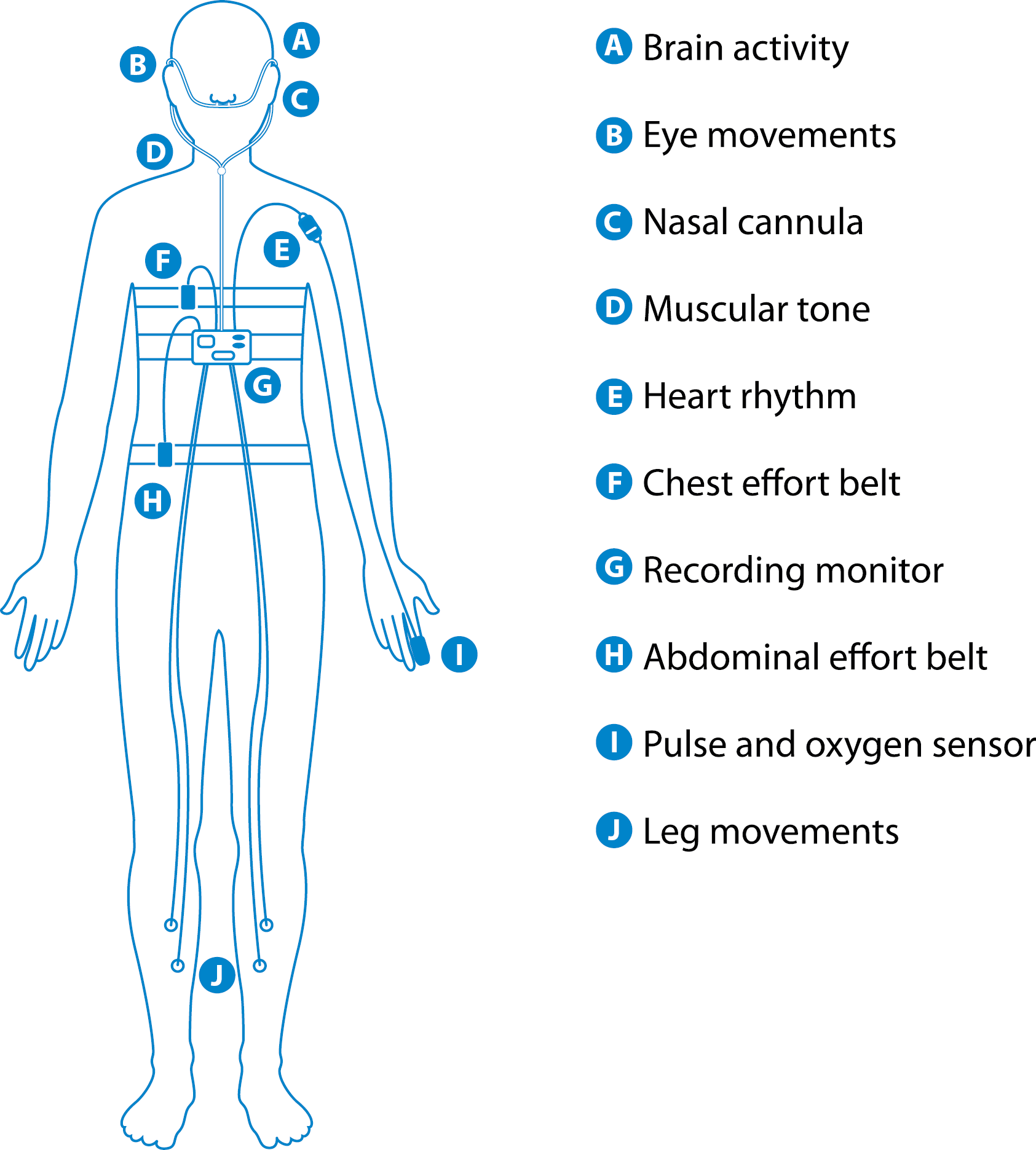If you feel sleepy when you’re awake or have a headache in the morning, this may be explained by things that happen while you’re asleep.
Other symptoms include:
- waking feeling unrefreshed
- feeling tired in the day
- morning headaches
- abnormal oxygen levels
- high carbon dioxide levels
- sometimes a loved one may have seen you hold your breath during sleep.
If you have these symptoms, you may need one or more of these sleep tests. Your doctor may request:
- a respiratory sleep test or limited respiratory sleep study (LSS)
- overnight oximetry
- polysomnography
- a multiple sleep latency test
- a maintenance of wakefulness test
- an OSLER test
Will I have to stay overnight in a sleep clinic?
You may be observed overnight at a sleep clinic or by using a small monitor worn overnight at home.
Preparing for your sleep tests
If you are referred to a local sleep centre, they will ask about your medical history and symptoms and may examine you physically. They will measure your height and weight to find out your body mass index and measure your collar size. You may be asked to attend with your partner, as they may be able to answer questions about what happens to you during your sleep.
The sleep specialists may then arrange for your sleep to be assessed overnight. You will be asked to complete a sleep questionnaire and a medication list. In particular, the clinician will be interested in medications such as sleeping tablets, anti-depressants and prescribed painkillers. These can commonly affect your sleep and make you more tired during the day.
Respiratory sleep test
A respiratory sleep test is used to diagnose sleep disordered breathing (SDB) which can include conditions such as obstructive sleep apnoea (OSA). While you sleep, you’ll wear some equipment to record your oxygen levels, breathing, breathing movements, heart rate and snoring.
For an accurate assessment, you will need to sleep with the equipment on for at least 4 hours. Sometimes, you might need to repeat the sleep test, if the recording isn’t clear.

Overnight oximetry and transcutaneous carbon dioxide monitoring
Sometimes, your doctor may want to monitor only your oxygen levels overnight. You’ll do a test called overnight oximetry. This may be used to diagnose a condition or to ensure treatment is effective. You wear a small clip on your finger, or sometimes on your earlobe, known as a pulse oximeter. This can record your oxygen levels and your heart rate overnight.
In some patients, doctors may want to know your carbon dioxide (CO2) levels. They may do a blood test from your ear or your wrist. Some centres may use a transcutaneous CO2 monitor. This uses an electrode, usually on your ear, to record CO2 levels through the skin.
Polysomnography
Polysomnography is a more complex test used to analyse sleep. It’s an overnight study conducted in a quiet hospital room. It’s designed to:
- assess sleep and wakefulness – it measures your brain waves, eye movements and muscle movements
- assess your heart and breathing – it measures your breathing, chest wall motion, oxygen levels and heart activity
- record video and audio footage
If basic tests haven’t given clear results, and also if you make abnormal movements or do strange things while you’re asleep, a polysomnography may be needed. Some equipment will be attached to you with tape, wires and straps to take the measures as you sleep.

Multiple sleep latency test
Your sleep specialist may ask you to stay in hospital after the overnight stay for a multiple sleep latency test. You’ll be asked to nap for periods of 20 minutes at set times. You would keep on the same equipment you had for the polysomnography.
Maintenance of wakefulness test
The specialist may want to know how alert you are during the day and how easily you fall asleep. You’ll do a maintenance of wakefulness test during the day following your overnight stay.
You’ll be asked to stay awake for as long as you can, sitting still in a quiet, relaxing, semi-darkened room. You would keep on the same equipment you had for the polysomnography.
OSLER test
An Oxford sleep resistance (OSLER) test measures the amount of time you are able to stay awake in conditions that are favourable to fall asleep. This test is performed during the daytime.
You will be asked to lie in a semi-recumbent position (half lying down, half sitting up) in a quiet, darkened room. You will have a handheld box with a button to press every time you see a red light.
We're currently reviewing this information. An updated version will be available soon.




